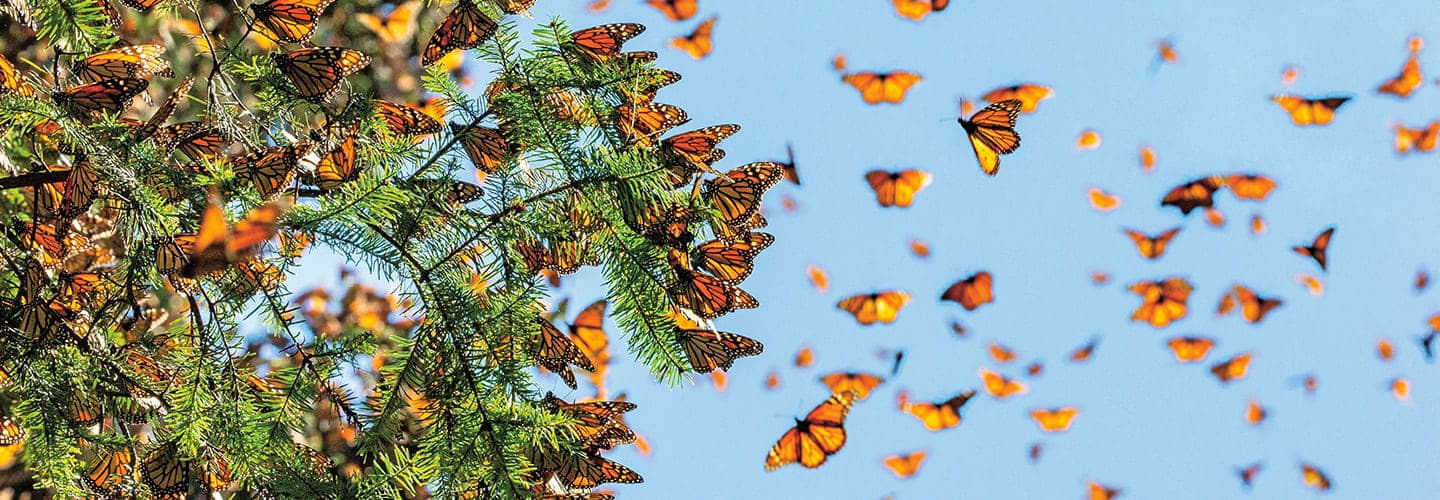One of the largest migrations on Earth is taking place right now—and it might be happening in your backyard. In mid-August, millions of monarch butterflies started flying south from the U.S. and Canada. Some will travel as far as 3,000 miles to reach forests in central Mexico. For several months, the fir trees in the butterflies’ winter home will be blanketed in orange and black.
Scientists are anxious to find out how many monarchs make the trip this year. Last winter, the number of monarchs in Mexico dropped nearly 60 percent from the year before. It’s part of a trend that has seen the monarch population fall sharply over the past 30 years. Experts are concerned about the future of the butterflies.
“For almost any population of living organisms, there is a point of no return,” says Karen Oberhauser. She’s an entomologist who has studied monarch butterflies for more than 30 years.
Can we help save these colorful butterflies before it’s too late?

